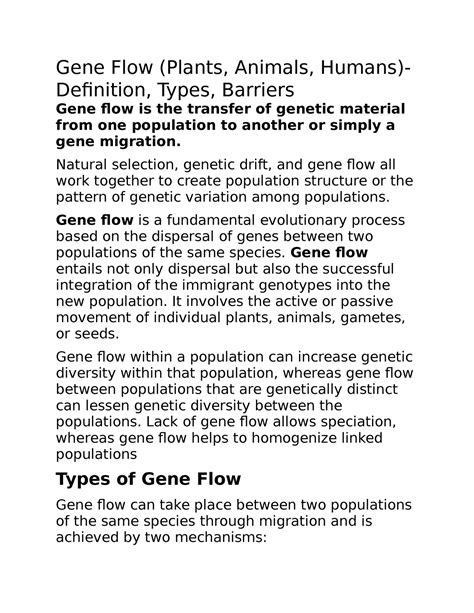Cross Pollination Genetic Variation

Genetic variation is the raw material for evolution, and it is essential for the survival and adaptation of species. One of the key mechanisms that generate genetic variation is cross-pollination, which is the transfer of pollen from the anther of one plant to the stigma of another plant. This process allows for the mixing of genetic material from two different plants, resulting in offspring with unique combinations of traits. In this article, we will explore the concept of cross-pollination and its role in generating genetic variation, with a focus on the mechanisms, benefits, and examples of this process.
Key Points
- Cross-pollination is the transfer of pollen from one plant to another, resulting in genetic variation.
- Genetic variation is essential for the survival and adaptation of species.
- Cross-pollination can occur through various mechanisms, including wind, insects, and animals.
- The benefits of cross-pollination include increased genetic diversity, improved fitness, and enhanced adaptability.
- Examples of cross-pollination can be seen in plants such as corn, wheat, and sunflowers.
Mechanisms of Cross-Pollination

Cross-pollination can occur through various mechanisms, including wind, insects, and animals. Wind-pollination is common in plants such as grasses and conifers, where pollen is released into the air and carried to the stigma of another plant. Insect-pollination is more common in plants such as flowers, where pollen is transferred from the anther to the stigma through the activity of insects such as bees and butterflies. Animal-pollination is also common in plants such as cacti and succulents, where pollen is transferred through the activity of animals such as bats and hummingbirds.
Benefits of Cross-Pollination
The benefits of cross-pollination are numerous and well-documented. One of the primary benefits is the increase in genetic diversity, which is essential for the survival and adaptation of species. Genetic diversity allows populations to adapt to changing environmental conditions, such as shifts in temperature and precipitation patterns. Cross-pollination also improves fitness, as offspring with unique combinations of traits are more likely to survive and reproduce. Additionally, cross-pollination enhances adaptability, as populations with increased genetic diversity are better able to respond to changing environmental conditions.
| Plant Species | Mechanism of Cross-Pollination | Benefits |
|---|---|---|
| Corn | Wind-pollination | Increased genetic diversity, improved fitness |
| Wheat | Wind-pollination | Enhanced adaptability, improved yield |
| Sunflowers | Insect-pollination | Increased genetic diversity, improved fitness |

Examples of Cross-Pollination

Examples of cross-pollination can be seen in a variety of plant species. Corn, for example, is a wind-pollinated plant that relies on the transfer of pollen from one plant to another to produce offspring. Wheat is another example of a wind-pollinated plant, where the transfer of pollen from one plant to another results in increased genetic diversity and improved fitness. Sunflowers, on the other hand, are insect-pollinated plants that rely on the activity of insects such as bees and butterflies to transfer pollen from one plant to another.
Challenges and Limitations
While cross-pollination is an essential mechanism for generating genetic variation, there are also challenges and limitations to this process. One of the primary challenges is the lack of genetic diversity in some plant species, which can limit the potential for cross-pollination. Additionally, the process of cross-pollination can be disrupted by environmental factors such as pollution, climate change, and habitat destruction. As a result, it is essential to conserve and protect plant species, as well as the pollinators that facilitate the process of cross-pollination.
What is cross-pollination and how does it occur?
+Cross-pollination is the transfer of pollen from one plant to another, resulting in genetic variation. It can occur through various mechanisms, including wind, insects, and animals.
What are the benefits of cross-pollination?
+The benefits of cross-pollination include increased genetic diversity, improved fitness, and enhanced adaptability.
Can cross-pollination occur in all plant species?
+No, cross-pollination cannot occur in all plant species. Some plant species, such as self-pollinating plants, do not require cross-pollination to produce offspring.
In conclusion, cross-pollination is a critical mechanism for generating genetic variation in plant species. By allowing for the mixing of genetic material from two different plants, cross-pollination provides the raw material for evolution and adaptation. As a result, cross-pollination is essential for the survival and success of plant species. By understanding the mechanisms, benefits, and examples of cross-pollination, we can better appreciate the importance of this process and work to conserve and protect plant species, as well as the pollinators that facilitate the process of cross-pollination.